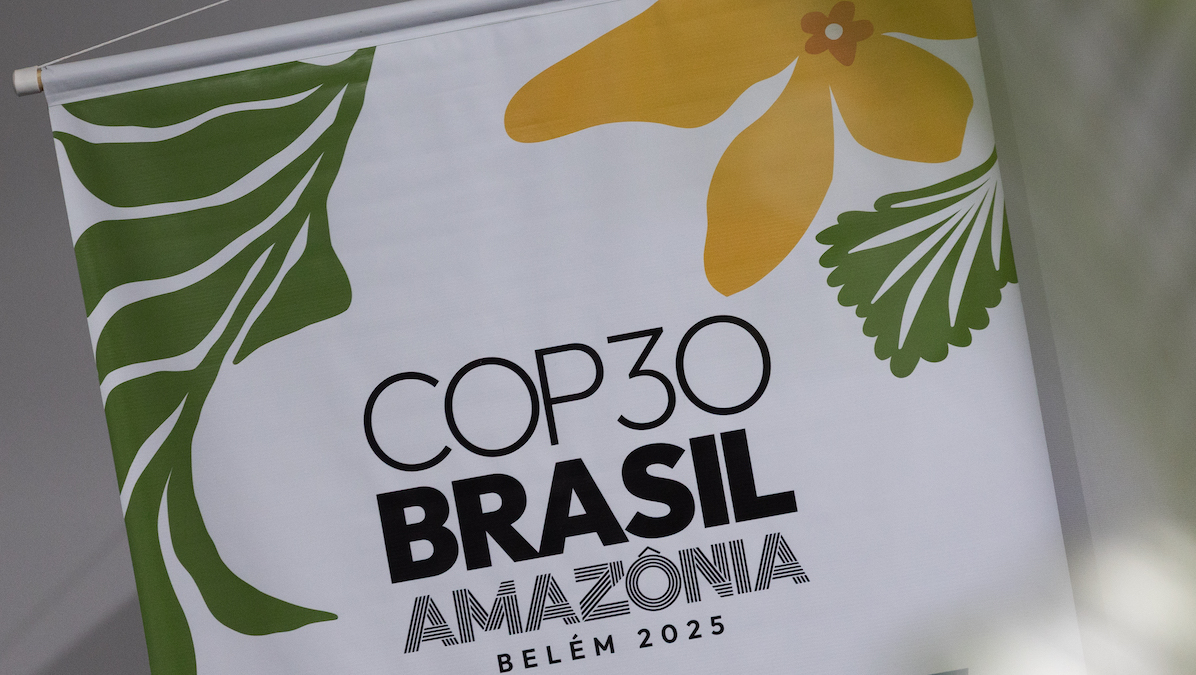Research & Developments is a blog for brief updates that provide context for the flurry of news that impacts science and scientists today.
The world has made significant progress on methane mitigation since 2020, though meeting the goals of a major international pledge will require additional action, according to a United Nations Environment Programme (UNEP) report.
The report was publicized today at the UN Framework Convention on Climate Change Conference of the Parties (COP30) in Belém, Brazil. It is the first comprehensive stocktake of global methane emissions since the 2030 Global Methane Pledge, an international agreement that aims to reduce global methane emissions by 30% compared to 2020 levels by 2030, was launched in 2021.
“The global methane pledge is still achievable.”
“The global methane pledge is still achievable,” said Ruth Zugman do Coutto, the deputy director for UNEP’s Climate Change Division, in a press conference. “We have the tools, technologies and data, and 80% of the reduction potential can be achieved through low cost measures available today, but we must accelerate action now.”
Methane is a powerful greenhouse gas able to warm the atmosphere about 30 times as much as the equivalent amount of carbon dioxide. Human-caused methane emissions come mostly from agriculture, livestock, natural gas, and landfills.
Though global methane emissions are still rising, new waste regulations in Europe and North America, slower growth of natural gas markets, and additional national pledges to reduce methane have lowered projected global methane emissions. Countries’ new 2025 commitments are projected to cause an 8% reduction in human-caused methane emissions by 2030 compared to 2020-level commitments. If these commitments are realized, they would be the largest decline in methane emissions in history.
“We have seen an unprecedented increase in the availability and quality of data and knowledge, and the ambition for methane abatement. This is proof of what collective action can achieve,” wrote Cristina Lobillo Borrero, the director for international relations and energy security at the European Commission and Tibor Stelbaczy, the European Union principal adviser on energy diplomacy, in the report.
“Knowledge is still missing in terms of the broad coverage of all the millions of individual emitters in all sectors.”
However, meeting the 2030 Global Methane Pledge will require additional action and adoption of broader methane-reducing and methane-tracking technologies, the report states.
For example, though satellites track emissions from so-called methane “super-emitters” in detail, such entities still collectively represent a minority of total global methane emissions, wrote Stefan Schwietzke, senior scientist at data integration lead for UNEP’s International Methane Emissions Observatory (IMEO), in an email. “Knowledge is still missing in terms of the broad coverage of all the millions of individual emitters in all sectors,” he wrote.
All methane sources require more monitoring, but methane from rice farming and ruminants (a class of livestock that includes cattle, sheep, and goats), are particularly under-studied, Schweitzke wrote. Fragmentation of existing data and the use of different measurement technologies in different regions also hamper a straightforward understanding of the origins of methane emissions: “It is critically important to start integrating the existing data to build on current knowledge,” he wrote.
Related
• Read the Report: Global Methane Status Report 2025
• Global Methane Pledge
• Ministers Urge Decisive Methane Action as Global Report Shows Progress, Warns of Gaps
• Get Involved: AGU Science Policy Action Center
IMEO works to help national governments study methane emissions and build their capacity to monitor methane.
Meeting the Global Methane Pledge would avoid 0.2°C (0.36°F) of warming and more than 180,000 premature deaths by 2050 as well as $330 billion in annual avoided damages by 2030, according to the report. Adopting the maximum technically feasible methane reductions by 2030 would cost about $127 billion annually.
“Methane mitigation remains one of the smartest climate investments we can make, with benefits far exceeding the cost,” said Martina Otto, head of UNEP’s Climate & Clean Air Coalition, in a press conference. “Cost-effective solutions exist today, waiting to be brought to scale, and the benefits are enormous.”
—Grace van Deelen (@gvd.bsky.social), Staff Writer
These updates are made possible through information from the scientific community. Do you have a story about science or scientists? Send us a tip at [email protected].


